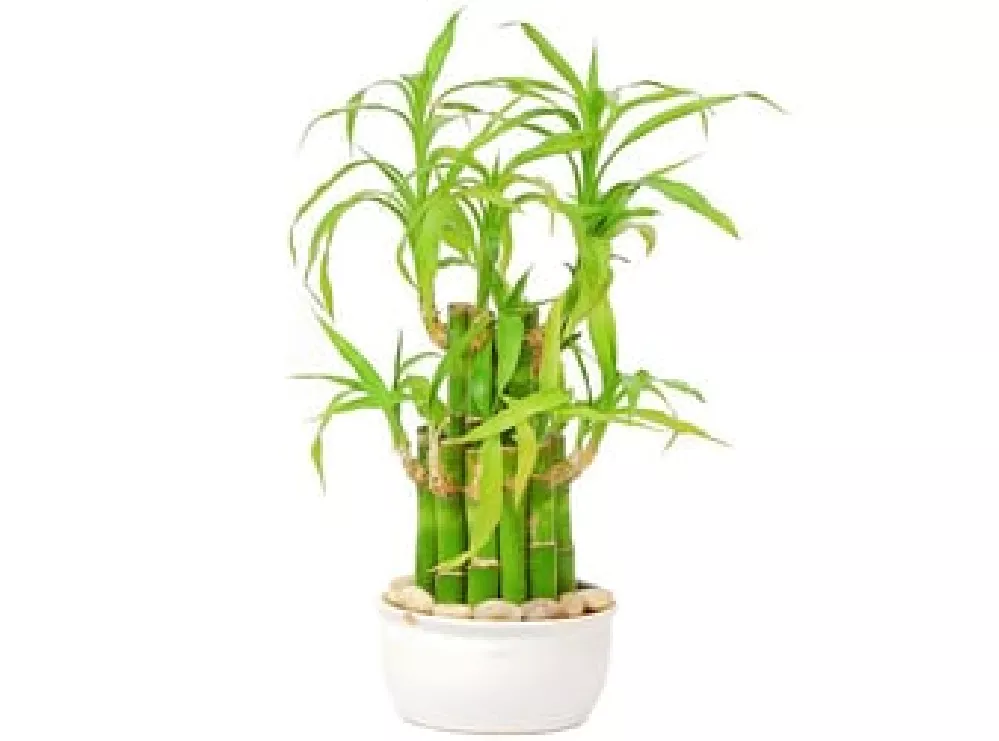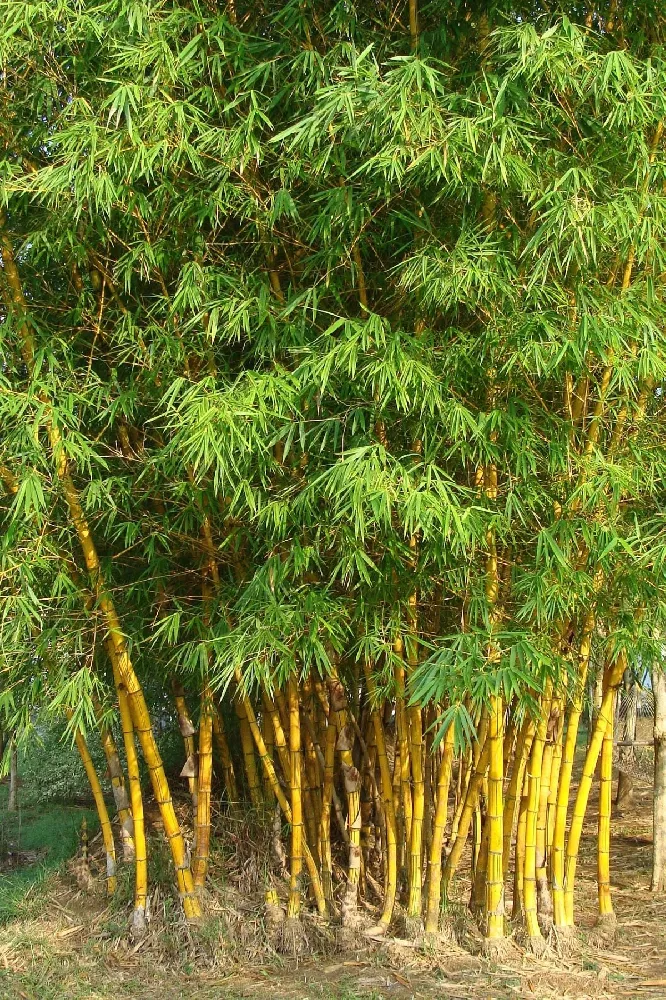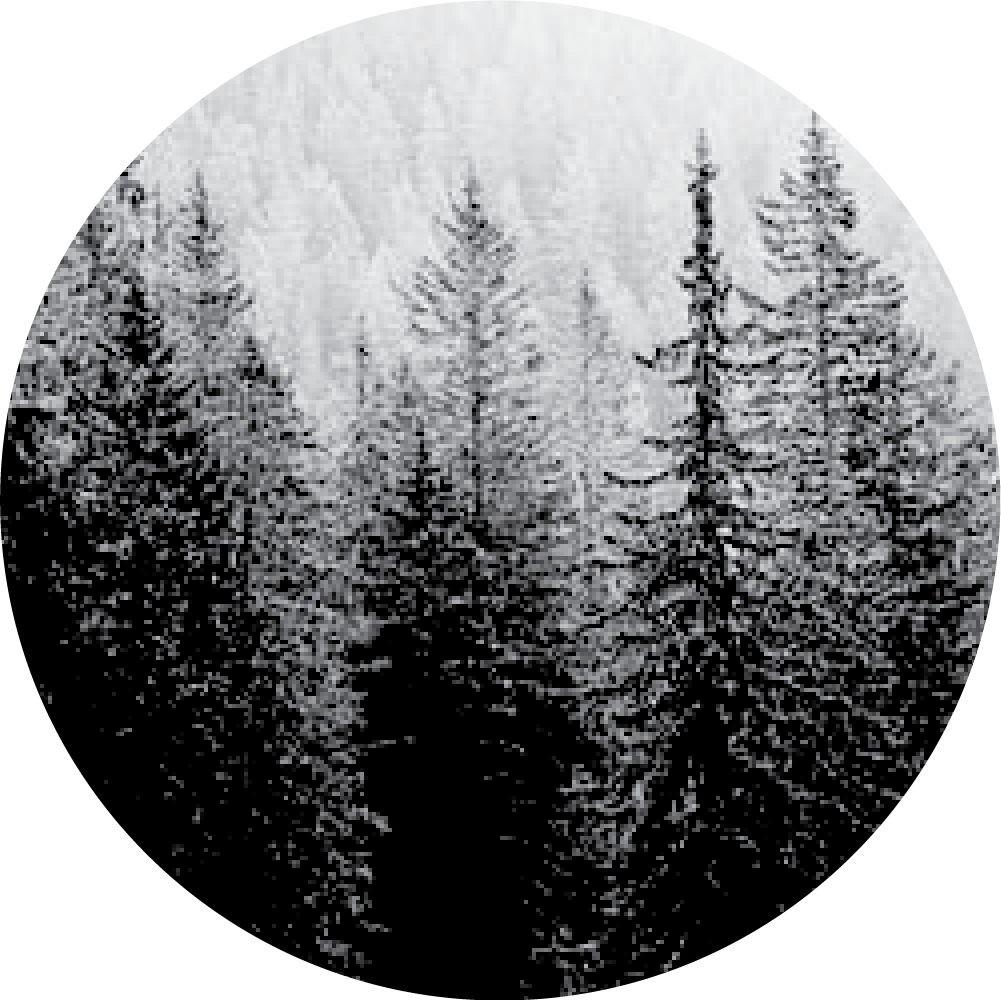- Home >
- Outdoor Bamboo Plants
Outdoor Bamboo Plants for Sale - Buying & Growing Guide
11 Results
-
-
-
Sold OutGrowing Zone(s): 4-11 patio / 8-11 outdoors$73.95
-
Sold OutGrowing Zone(s): 7-10$124.95
-
Sold OutGrowing Zone(s): 5-9$41.95
-
Sold OutGrowing Zone(s): 6-10$95.95
-
Sold OutGrowing Zone(s): 8-10$67.95
-
Sold OutGrowing Zone(s): 8-11$86.95
-
Sold OutGrowing Zone(s): 6-10$45.95
-
Sold OutGrowing Zone(s): 7-10$67.95
-
Sold OutGrowing Zone(s): 5-8$124.95
Outdoor Bamboo Plants – Buying & Growing Guide
Bamboo is a nice evergreen subfamily of treelike grasses. They are fast-growing and highly-resistant to any kind of weather though full sun fits them best. These plants are more vibrant and grow much faster outdoors. If you’re looking for some outdoor bamboo plants for your garden, this is the guide you need.
Bamboo Varieties
1. Tiger Bamboo
Scientific Name: Phyllostachys nigra ‘Boryana’
USDA Hardiness Zone: 7-11
Mature Size: Up to 25 feet tall
Light: Full sun to partial shade
Water: Average moisture needs
Soil: Well-draining, fertile
Tiger bamboo is a cultivar of Black Bamboo, which is native to China. Its common name comes from the fact that the canes, which are olive green at first, soon develop random brown markings in a pattern similar to a tiger’s coat. By the time the plant is around three years old, the canes will be entirely brown, with a glossy finish. This bamboo is evergreen and produces upright canes with stems that arch over. The plant has narrow leaves that come to a point and can measure up to five inches long.
This is a fast-growing plant that is ideal for quickly creating privacy screening in the garden. It has a more vigorous growth habit than many other types of bamboo, is easy to grow, and is fairly resistant to pests and diseases. The strength of the canes is so great that this type of bamboo is commonly used to create furniture in parts of Asia. Tiger bamboo thrives in fertile soils that are kept consistently moist. It will survive in dry soils and remain clump-forming in these conditions. In ideal growing conditions that are moist and warm, the plant can become invasive.
2. Green Glaucous Bamboo
Scientific Name: Phyllostachys viridiglaucescens
USDA Hardiness Zone: 7-11
Mature Size: Up to 25 feet tall
Light: Full sun to partial shade
Water: Average moisture needs
Soil: Well-draining, fertile
This evergreen bamboo is native to China. It produces upright culms that are a rich, emerald green when young but develop to a bright lime green with age. This can give the effect of a striking two-tone screen when the plant has young and old-growth growing alongside each other. The culms have a smooth texture, broken up by cream-colored node stripes along their lengths.
This plant produces clumps of leaves that are long and narrow, measuring up to seven inches long. The foliage color is what gives this plant its common name, as the leaves are bright green on their upper surface and a glaucous, powder gray on their underside.
This is an easy-to-grow plant that is thick and sturdy and ideal for creating a screen or an informal hedge. It grows as a dense thicket but can become invasive in optimum conditions. It loves warm climates and moist soil but should be grown in a protected position.
3. Blue Bamboo
Scientific Name: Himalayacalamus hookerianus
USDA Hardiness Zone: 8-9
Mature Size: Up to 20 feet tall
Light: Partial shade
Water: Average moisture needs
Soil: Well-draining, fertile
This is an evergreen plant that is native to India and Nepal. Despite being commonly known as ‘blue bamboo,’ the culms of this plant actually appear in a range of beautiful, subdued colors. At first, the culms are a shade of emerald green and soon develop a waxy powder blue coating, which can appear blue or gray depending on the light. As the plant develops, the culms will take on a dark purple hue before finally fading to an orange-yellow. When young and old culms are growing side by side, the resulting effect is a dramatic rainbow of different colored culms.
The foliage of the plant is long and slender, with each leaf reaching around seven inches in length. Foliage is green and shiny on the surface and a paler green beneath. This is a good bamboo to grow if you are worried about the plant becoming invasive because this specific type of bamboo will not grow excessively. It retains its compact clump-forming habit, even in ideal conditions.
This plant should be grown in a position that is sheltered from the wind, from the direct afternoon sun, and from frost. It does not tolerate high levels of heat and should ideally be grown in the light shade because the leaves will quickly curl up when exposed to strong direct light.
4. Dragon Head Bamboo
Scientific Name: Fargesia rufa
USDA Hardiness Zone: 5-8
Mature Size: Up to 8 feet tall
Light: Partial shade
Water: Average to high moisture needs
Soil: Moisture retentive, fertile
This is an especially attractive type of evergreen bamboo that is native to China. It has been the recipient of the Award of Garden Merit from the Royal Horticultural Society due to its exceptional attributes. When young, the plant produces upright culms in a glossy bright green, which are clump-forming and fairly short compared to other bamboos. These culms arch with age under the heavyweight of the leaves. Foliage is narrow and comes to a point, measuring around four inches in length, with a shiny blue-green surface and pale green matte underside.
This plant has a vigorous growth habit but is non-invasive and instead forms dense clumps. It is easy to grow and works well in a container, as well as for creating a low hedge or informal privacy shield. It can tolerate some direct sun but should be protected from the afternoon sun when the rays are strongest. This is the type of bamboo that is notorious for being a primary source of food for the Giant Panda.
5. Chinese Fountain Bamboo
Scientific Name: Fargesia nitida
USDA Hardiness Zone: 5-9
Mature Size: Up to 15 feet tall
Light: Partial shade
Water: Average to high moisture needs
Soil: Fertile, moisture-retentive
This is an evergreen plant native to China, which has a delicate and graceful loo, though it is actually very tough. Its culms are long and slender, in a dark shade of green with flushes of purple. The upper portion of the culms produces large sprays of foliage, causing the canes to heavily arch under the pressure of the weight. The leaves are quite short at around four inches in a narrow shape that comes to a point. They have a matte texture, in dark gray-green on the upper sides and pale gray-green underneath.
This is a non-invasive type of bamboo that grows in dense clumps. It is ideally used as a windbreak or a privacy screen, and in spite of its dainty visual appeal, it is able to withstand severe winters of temperatures as low as -4 °F. If you have a shaded spot in the garden, then this is a great choice, as it is one of the best shade-loving types of bamboo. Though it can tolerate some direct sunlight, its leaves respond to strong sunlight by curling up. It should be grown in soil that is consistently moist.
6. Umbrella Bamboo
Scientific Name: Fargesia murielae
USDA Hardiness Zone: 5-9
Mature Size: Up to 15 feet tall
Light: Partial shade
Water: Average to high moisture needs
Soil: Moisture retentive, fertile
Native to China, this evergreen bamboo is hardy, easy to grow, and adapts well to a variety of growing conditions. It produces tall and slender canes that gently arch from the weight of the densely growing foliage. The leaves of this bamboo reach around four inches in length and are narrow. They are a bright yellow-green on the surface and a dull gray-green beneath.
This bamboo grows in clumps but is not invasive. It is ideal for use as a privacy screen or informal hedge and creates interest and texture in the garden through every season. Umbrella bamboo performs best in partial shade and enjoys moist, rich soils. It is commonly seen growing alongside ponds or riverbanks, where the soil tends to meet these criteria. This is a hugely popular type of bamboo, widely regarded as one of the best and easiest to grow. It has won the Award of Garden Merit for its many outstanding traits.
7. Buddha Belly Bamboo
Scientific Name: Bambusa ventricosa
USDA Hardiness Zone: 9-12
Mature Size: Up to 50 feet tall
Light: Full sun to partial shade
Water: Average moisture needs
Soil: Well-draining, fertile
This is a very decorative type of bamboo that is native to China and notable for its unusual culms that bulge out between each node to give the swollen look of a Buddha belly. It is popularly grown in containers where it does not usually exceed 8 feet in height, though in its natural environment would be expected to grow to between 40 and 50 feet tall. The upright culms of this plant are bright green when young, maturing to a yellow shade as they age but always maintaining their attractive glossy texture.
The foliage of the plant is dark green, with long and narrow leaves that are typically around seven inches long. This plant is non-invasive and can be grown as a privacy screen. It thrives in moist soils, but wet soils should be avoided. In order to produce the most pronounced bulges between each node, the bamboo will need to be under-watered, under-fertilized, or kept root bound in a container.
8. Giant Bamboo
Scientific Name: Dendrocalamus giganteus
USDA Hardiness Zone: 9-11
Mature Size: Up to 100 feet tall
Light: Full sun to partial shade
Water: Average moisture needs
Soil: Well-draining, fertile
As you would expect from its common name, this is a very large species of bamboo that is native to Thailand, Burma, and China. It produces incredibly chunky and sturdy upright culms, which vary from dull blue-green to dull dark gray or green in color, and have a powdery white crust covering them in their earlier years. Each culm can measure up to one foot in diameter, and they are shockingly fast at growing, with new shoots able to gain as much as 12 inches in height in a single day.
Giant bamboo can be expected to reach eventual heights of between 80 and 100 feet, with a spread of around half that size. They grow easily and form large clumps. The culms of this bamboo are utilized in making furniture, crafts, and construction. This bamboo thrives in climates with high humidity levels and rich, loamy soil.
9. Tortoise Shell Bamboo
Scientific Name: Phyllostachys edulis ‘Heterocycla’
USDA Hardiness Zone: 7-10
Mature Size: Up to 25 feet tall
Light: Full sun to partial shade
Water: Average to high moisture needs
Soil: Well-draining, fertile
This is an evergreen bamboo native to eastern Asia. It is very rare and highly sought after due to its very unusual looking culms that are visually very different from all other types of bamboo. The lower portion of the culms produce internodes that alternately compress and incline, giving them a curving, almost zig-zag shape. This pattern on the culms is present on the first few feet of growth, and the rest will grow straight and upright.
The culms emerge gray and develop to a yellow-green before finally maturing in green-tinged with orange. They are quite thick and sturdy, measuring around four inches across each. When young, these culms are shrouded in very fine, velvety hair. The foliage of this bamboo is quite small in comparison to the size of the culms, with pale green leaves that grow no larger than four inches long. This bamboo has a vigorous growth habit and can become out of control in ideal conditions. It enjoys rich and fertile soils that are kept consistently moist.
10. Japanese Timber Bamboo
Scientific Name: Phyllostachys bambusoides
USDA Hardiness Zone: 7-10
Mature Size: Up to 70 feet tall
Light: Full sun to partial shade
Water: Average moisture needs
Soil: Well-draining, fertile
This evergreen bamboo is native to China, but it gained the common name of Japanese Timber Bamboo because it is the most widely cultivated type of bamboo in the country, where it is harvested for its timber. The culms grow to great heights, are straight and glossy. They reach about six inches across at maturity and begin out bright green but develop to yellow-green. It grows vigorously and works well to create privacy screening. To keep it growing in clumps, it should be in dry or poor soils. In ideal soils that are moist and fertile, it can become invasive.





















